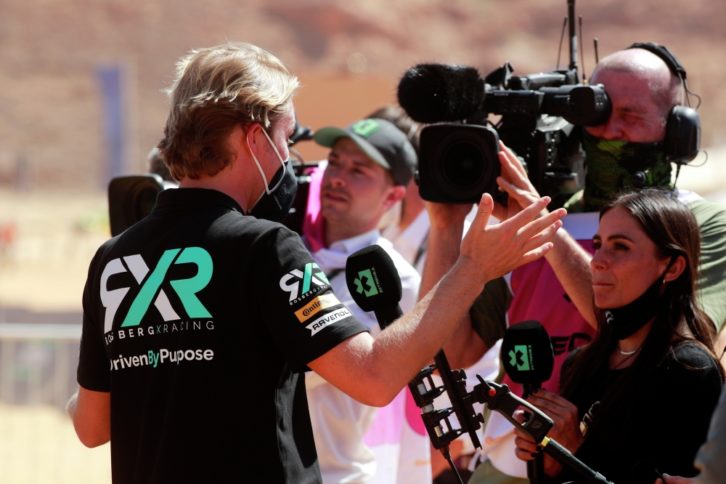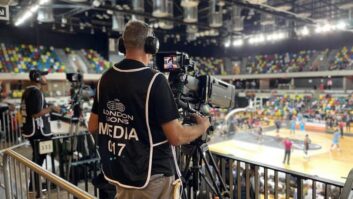As Extreme E prepares for the start of its second season in Saudi Arabia next week, the sport has released its first Sustainability Report, including details its carbon footprint for season one.
As part of its aim to be as carbon neutral as possible, Extreme E partnered with Aurora Media Worldwide and NEP to develop a technical solution that reaches the most remote locations whilst reducing the environmental impact across the entire production.
The remote production workflows have been designed to keep the carbon footprint on site to a minimum. According to the report, in season one Extreme E achieved a 78 per cent Carbon Action Plan Score from albert.
Months of planning went into the workflows before the start of season one, much of that done during the first year of the pandemic. “We had probably a year’s worth of planning and execution over video calls, which has been nuts to be honest,” James Pearce, partnerships director at Aurora Media Worldwide, tells TVBEurope.
“But we had always planned to have a fully remote production, even before the pandemic. The vision of Extreme E was to reduce the carbon footprint as much as possible for a sporting event, and that absolutely goes hand in hand with how the show is produced from a TV perspective as well.”
For a non-remote workflow, a team of around 160 people would usually be working on site, flying in from various parts of the world. “During Extreme E’s first season we had between 45 and 50 people on site, which was a combination of camera crew, production management, engineers, techies, sound and our reporter,” explains Pearce. “We cut each race on site, so we have a director and our series producer on site. I think we have eight track cameras on site, 12 Mini X cams around site, four on-boards per car, so that’s 24-on boards across the series, three drones, and then a few unmanned cameras in the command centre. So with 60 feeds and around 45 people on site, it’s pretty mental!

“All those get plugged into our small gallery which is in a tent, all our production offices and galleries on site are tents. That is interesting when you’re in Greenland and it’s about minus three degrees, but then you go to the desert and it’s 30 degrees. It’s all very surreal,” he laughs.
Each feed is sent into Aurora’s gallery, where the director takes a rough cut. That is then sent back to NEP’s hub in London, with graphics and timings coming from Barcelona. “There are a number of nodes around the course which take all the data from the cars and the timings and that gets sent straight from site to Barcelona,” explains Pearce. “The sporting graphics and timings gets sent to our London hub, and then NEP in Hilversum get our feeds and they overlay the AR and VR graphics.
“They have two virtual drone pilots as well flying around in the virtual world that’s been created, which again, we put into the broadcast, and is sent back to London, and then our team in London pull together the final master version. Our commentators are based in London as well. Then it gets pumped out to about 80 broadcasters around the world and there’s about a two to five second delay.”
With season two set to begin next week, the team have been looking at further ways to reduce their carbon footprint. “We’ve got 41 people going to Saudi Arabia, and we’ll reduce that number depending on what race is,” states Pearce. “As we’re a partner of Extreme E we’re part of everything that they’re doing in terms of sustainability as well. So for example, we bring our own mugs and plates. I think the first time we did it in Greenland, by bringing our own mugs, we saved 12,000 disposable cups, and by bringing our own plates and bowls, we saved 15,000 disposable plates and bowls on one race across the entire race infrastructure.”
All of the broadcast kit is shipped to each race on Extreme E’s HMS St Helena. “It’s a bit of an effort to get everything packed up straight away, and put into the crates to get shipped straight back to the ship,” Pearce adds.
“NEP are a trusted partner of ours, and we worked with them to buy in all new kit for season one. They’re also on board in terms of the sustainability journey. All of the kit goes onto the ship and is transferred around each each venue. If we need to upgrade things they might fly it in but then it’ll go and travel around with the the travelling circus.”
The full Extreme E Sustainability Report is available to download here.







